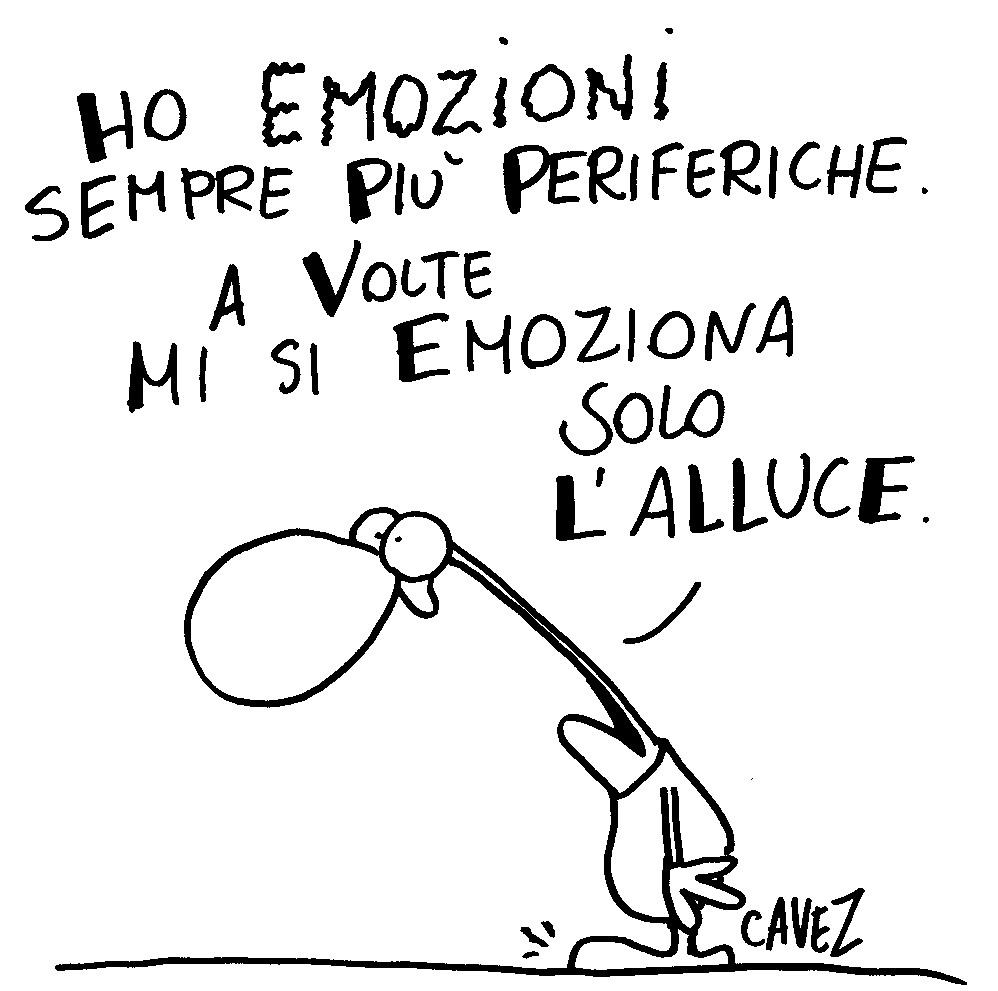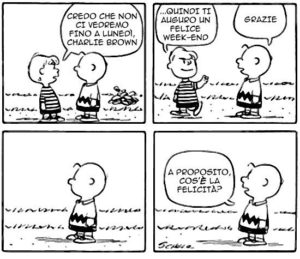Online Family Point. The joyous joy of emotions: happiness and joy
Vignette of Massimo Cavezzali
This week Dr Serra, Psychologist of the Family Point of the Acli of Cagliari, will address the theme of the different Emotions that accompany us in alternating phases in our days, especially in this period. Learning to recognize them will also help us understand them.
“In this particular period we may have experienced a whirlwind of emotions and seen people manifest emotions with each other many different.
So, starting today, the idea is to share with you some articles on this topic starting with this question: what are emotions?
An emotion is an experience that includes three components:
- cognitive evaluation of the stimulus, the meaning given to an event in the environment;
- subjective experience, what a person feels when they feel an emotion;
- a physiological reaction with impulse to action, an example of a physiological reaction and the increase in heart rate that prepares us to run away from a stimulus rated as frightening;
- manifest behavior, a motor reaction and facial expression that accompany an emotion.
Emotions have the function of preparing us to face an unexpected event, dangerous or pleasant, so, even though we sometimes get the impression that emotions are a disturbing element, actually perform an adaptive function.
In the course of our cognitive and social development, we become more aware of the emotional experience: let's talk about "emotional competence", ability to recognize and understand the emotions of one's own and others', to relate external circumstances with emotional states, to share their emotions and develop self-control and self-regulation strategies.
However, it is with the learning of the "rules of ostentation" that we learn to regulate the manifestation of emotions on the basis of the standards of the socio-cultural group of belonging.
Most scholars believe that there are six primary emotions[1] whose expression is considered universal, spontaneous and innate.
These are: Happiness, Fear, Anger, Sadness, surprise and disgust.
Today we begin with the first primary emotion, perhaps what at a time like this requires a greater commitment on our part to cultivate it, turning our attention to what we feel happiness for.
Happiness is defined as a condition of contentment with regard to life. It is an emotional state of well-being linked to the positive events that each of us experiences in the course of our lives. But if it is true that every emotion plays an adaptive function, what is happiness? According to Fredrickson (2001) its function is to allow our organism to "recharge", to recover the necessary resources and then be able to deal with the unfavourable events of life.
Many scholars argue that there is a difference between happiness and Joy. The latter is seen as a sudden emotion, quite intense and characterized by a strong state of activation of our body (Breathing, Heartbeat, And so on), while happiness is not so much linked to the moment of an event as to a more general sense of realization of one's own existence.
Now you just have to wait to know all the other primary emotions!”
Dr Nicoletta Serra
Psychologist Psychotherapist Point Family Acli
Cagliari, 11 May 2020
Bibliography
Schaffer R. H. (2005), Developmental psychology. An introduction, Rffaello Cortina Publisher
Gavazzi I. G. (2009), Psychology of emotional development, The Mill
Roll D. (2005), Short dictionary of developmental and education psychology, Carocci publisher
[1] There are several complex emotions, instead, are the result of an experience-based process, environmental and cultural information, cognitive development, communicative and social, such as shame, blame




 Italiano
Italiano English
English Français
Français Español
Español






